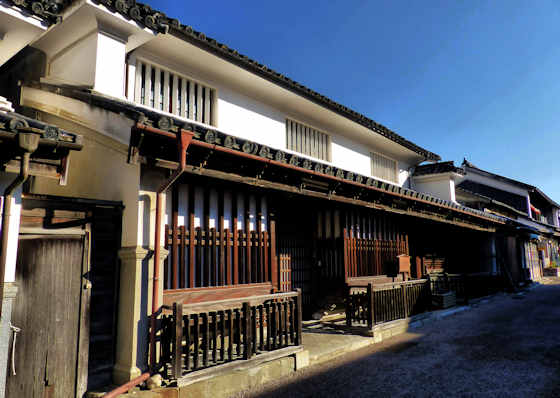Wakimachi is located on the north bank of the Yoshino River in the interior of Shikoku. It is now part of Mima City in Tokushima, the modern name for what was Sanuki Province.
This part of Shikoku became renowned for producing the highest quality indigo in Japan and the trade in indigo made many merchants rich.
Wakimachi established itself as the main trading centre of the area and the old main street of the town was lined with residences and stores of the wealthiest of the merchants.
Enough of the traditional architecture remains so that it is registered as a traditional architecture preservation district, and unlike many such districts, all the above grounds power lines have been buried to give the visitor a more authentic experience.
One of the architectural features that is commonly mentioned in the literature about Wakimachi is udatsu, which are the extensions protruding out from the side of the houses above the ground floor.
Made of plastered earth, their function is to stop fire from spreading from one structure to the next, a kind of firebreak. Udatsu can be seen in many traditional buildings, but here in Wakimachi the merchants competed with each other to build more and more elaborate and grand udatsu as a kind of ostentatious one-upmanship.
Some of the historic buildings on the street are private homes, and some are empty. There are a few gift shops and cafes, and one, the former Yoshida Family Residence, is open to the public as a local history museum.
Built in 1792, the 5 buildings that make up this former indigo merchants property display a slice of historic life and background information on the indigo trade. A ticket to the Yoshida House includes entry to the nearby
wooden theatre Odeonza.
The nearest train station to Wakimachi is Anabuki Station, several miles away on the other side of the river, so Wakimachi is not so easy to get to, consequently, it is in no danger of being overcrowded or over-commercialized like some of the more well-known preservation districts.
A few miles upstream is the historic Teramachi district with some nice temples that I will cover in the next post in this series documenting the third day of my walk along the
Shikoku Fudo Myo Pilgrimage.

























